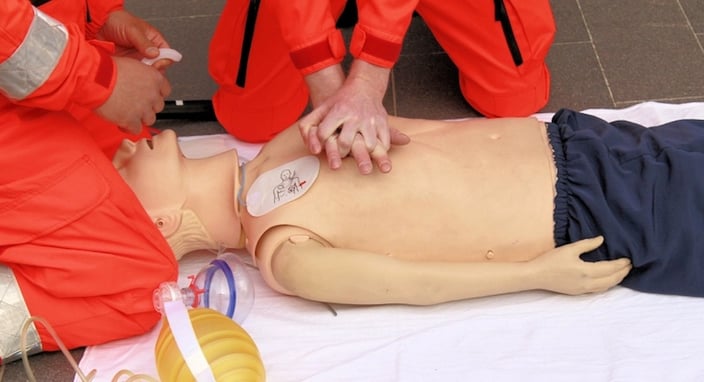 When was the last time you intubated a patient? If you work in a busy metropolitan area, with high trauma rates or a large elderly population, intubations may be a regular occurrence. But for many emergency personnel, especially those assigned to slower stations, intubations are few and far between. Which makes it all the more critical to stay on top of your skills. And if you aren’t getting tubes in the field, the only other place to hone your technique is through training.
When was the last time you intubated a patient? If you work in a busy metropolitan area, with high trauma rates or a large elderly population, intubations may be a regular occurrence. But for many emergency personnel, especially those assigned to slower stations, intubations are few and far between. Which makes it all the more critical to stay on top of your skills. And if you aren’t getting tubes in the field, the only other place to hone your technique is through training.
When you consider your most imperative field treatments – resuscitation, drug therapy, trauma intervention – airway management trumps them all, for if the patient lacks a patent airway, nothing else matters. Defibrillation is useless, drugs are inconsequential, trauma protocols, irrelevant. Without oxygen, your patient’s chances are reduced to zero. Which is why airway proficiency should be at the forefront of your continuing education.
Practice, Practice…
But airway training should not simply consist of practicing your intubation skills on manikins. Although today’s training manikins are more realistic and provide the next-best-thing to intubating live patients, they still fall far short of the “real thing.” For as any seasoned medic can tell you, few intubations involve ideal airway anatomy and optimum surroundings.
Let’s start with the patient. It’s one thing if your patient is a large, healthy male with a low Mallampati score. It’s another case entirely if that patient is a frail, elderly woman or, worse case scenario, an infant. Although the likelihood of a field intubation may be low where you work, there’s an even smaller chance of that rare intubation being the ideal patient in the ideal setting.
The Difficult Airway
So as a quick review, let’s go over the characteristics of a difficult tube. They include:
- Anatomy: The size and shape of your patient will determine the ease of intubation. Some of the most challenging physical traits are:
- Obesity
- Short, thick necks
- An anterior trachea
- Extensive dental hardware/overbites
- Trauma: Patients with traumatic injuries, especially involving the face and mouth, can interfere with visualization and tube placement.
- Medical conditions: Your patient may have a pre-existing condition, such as masses or congenital defects (cleft palate) that can make intubation extremely challenging
As an emergency responder, you must not only be well-versed in managing the airway, you must possess the skill and confidence to take on the most difficult airways, and the only way to achieve proficiency is through practice, research, and preparation.
Mix it Up
Research and preparation can be done through textbooks, online resources, and staying abreast of the latest news and innovations. But practicing your skills is where the rubber meets the road, so here are a few suggestions that will prepare you for those difficult tubes:
- Practice on a wide variety of manikins (adult, child, infant, and neonate)
- Practice on various surfaces (not simply table-top), but on the floor, in a chair (to mimic entrapment), and in confined spaces
- Practice in low lighting (not every call occurs in a well-lit place)
- Practice with a variety of airway adjuncts (so you have more options if one method fails)
So not only is ongoing “difficult airway” training worth it to paramedics, it is a critical part of staying proficient. So keep your skills sharp, your confidence high, and prepare yourself for those “worse case” scenarios. The next tough tube could be just a call away.














